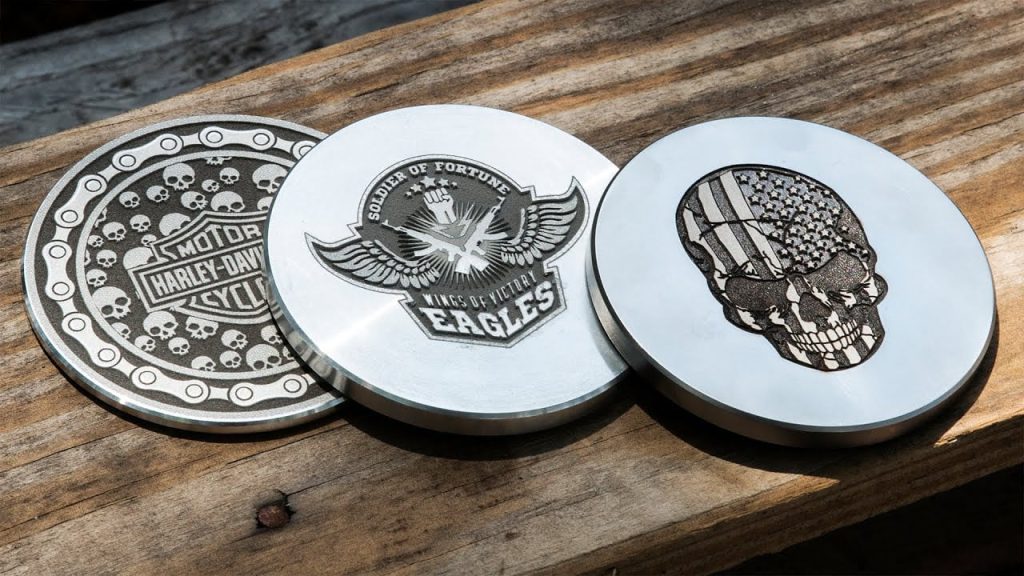In order to create quantified and aesthetically pleasing ornamented effects, the combination of embossing and Embossing Tape takes into account more control and accuracy. It’s an important tactic used in a variety of industries, but so is metal engraving. Learning the skill of metal engraving may produce astounding results, whether you’re adding crucial information to contemporary components or intricate designs on jewelry. Engraving into metal surfaces as part of the interaction creates extremely lasting marks. In this journey, we’ll share key techniques and methods for mastering metal engraving, making sure that each impression you create serves as a testament to your skill and dedication to the craft.
Benefits Of Engraving
- Personalization
Metal engraving has several benefits, one of which is that it may be personalized. Engraving is a technique to add a personal touch to metal objects, whether you want to add a name, date, or message.
- Durability
A design that has been permanently carved into metal won’t deteriorate or disappear over time. Because of this, engraving is a great option for long-lasting products like wedding rings or heritage jewelry.
- Precision
Additionally, engraving offers a high degree of accuracy. Modern engraving equipment makes it possible to produce incredibly detailed and complicated patterns.
Tips For Engraving Metal Manually
- Choose the Proper Metal
Choosing the appropriate metal for the work is the first thing to take into account while engraving metal. There are many various types of engravable metals available, ranging from expensive choices like gold to cost-effective choices like galvanized steel. The ideal metal for your project can withstand the engraving process.
- Choose the Proper Tool
Once the appropriate metal is prepared for engraving, you must choose the appropriate tool. Dremels and pneumatic engravers are the more reasonably priced choices available on the market. However, they usually only function with soft metals. You’ll need something with a bit more power if you’ve got your heart set on employing a tougher metal. Your demands for metal etching may be best served by a laser cutter. The process of laser engraving metal is also rather simple as all you need is a computer-generated design of your finished product.
- Test Various Attachments
You’ll need to buy other accessories if you decide to use a hand-powered tool, such as a Dremel or pneumatic engraver. For engravings of various sizes, several attachments are suitable. Use the appropriate one for the complexity of your project to reduce errors.
- Be Careful
Without the proper gloves to protect your hands from high-heat laser or high-speed hand engraver equipment, metal engraving may quickly turn harmful.
Tips For Laser Engraving
- Select the Proper Material
Different materials have various characteristics that have an impact on how they are engraved. For instance, some materials may be engraved more easily than others and with less laser power. Select a material that can be laser engraved and satisfies your unique specifications.
- Size Evaluation
The size of your engraving job is a crucial consideration when choosing a laser engraver. If you want to engrave huge pieces of metal, you’ll need a laser engraver with a bigger work area. Similar to this, if your metal engraving project asks for tiny, delicate drawings, you would want a laser engraver with greater precision. It is essential to assess the scope and intricacy of the project before choosing a laser engraver to undertake your metal engraving work.
- Test The Settings
To make sure you are using the right power and speed, test the laser settings on a scrap piece of material before you begin engraving. This will enable you to complete the engraving procedure without making any mistakes or blunders.
- Cooling System On The Laser Engraver
A lot of heat is produced during laser engraving, which might harm the laser and reduce the engraving’s quality. Therefore, it’s crucial to pick a laser engraver with a trustworthy cooling system that can effectively disperse the heat. As a water-cooled laser engraver can withstand greater power levels and provide superior engraving quality, it is more effective than an air-cooled one.
- Use High-Quality Designs
Use high-quality graphics and photos when designing with laser engraving. Low-quality engravings will be produced from low-quality designs.
- Pay Attention to Focus
Successful laser engraving depends on having the right focus. Before beginning each engraving session, make sure the laser’s beam is properly focused on the material by adjusting its focus.
Conclusion
Techniques for metal engraving help provide permanent component marking and identification of items across several sectors. We trust that this tutorial has helped you gain a better knowledge of the many metal engraving techniques that are available as well as the various materials to which they may be applied. For more information related to engraving feel free to contact us anytime or Visit Here To Related Post.
You may also like
-
Automatic Fruit Wine Bottling Line for Small Wineries: A Complete Guide
-
How Does Plywood HSN Code Decide the GST Rate for Traders and Manufacturers?
-
POS Terminal Type: Which Is Best for Your Business?
-
How to Choose Fixed and Portable Gas Monitors for Industrial Gas Detection?
-
Simplifying Trademark Registration in Hong Kong: What Businesses Need to Know

